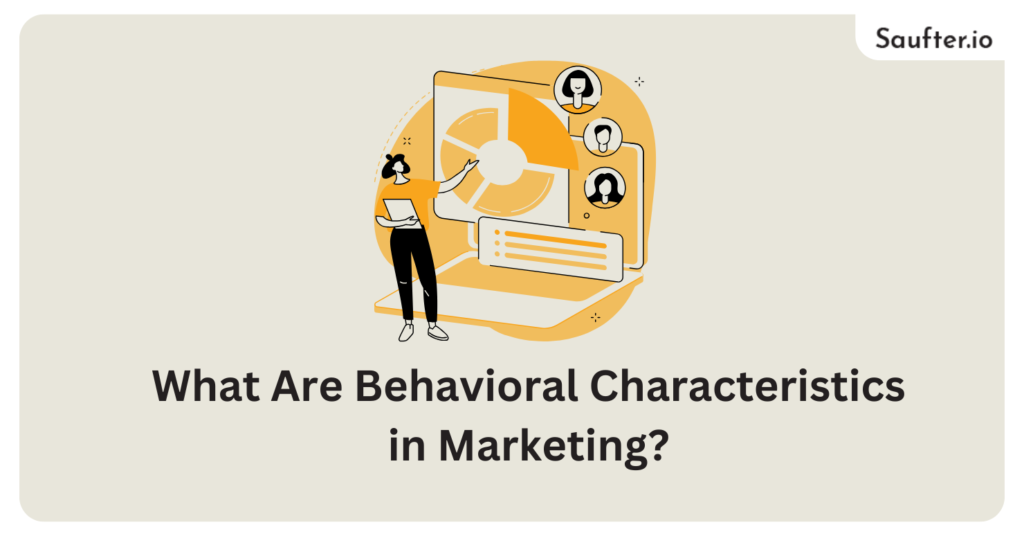Last Updated: December 2025
Behavioral segmentation is a vital tool in modern marketing, enabling businesses to tailor their strategies to meet the unique needs of their audiences. Companies can craft personalized campaigns that resonate more effectively by understanding how customers behave.
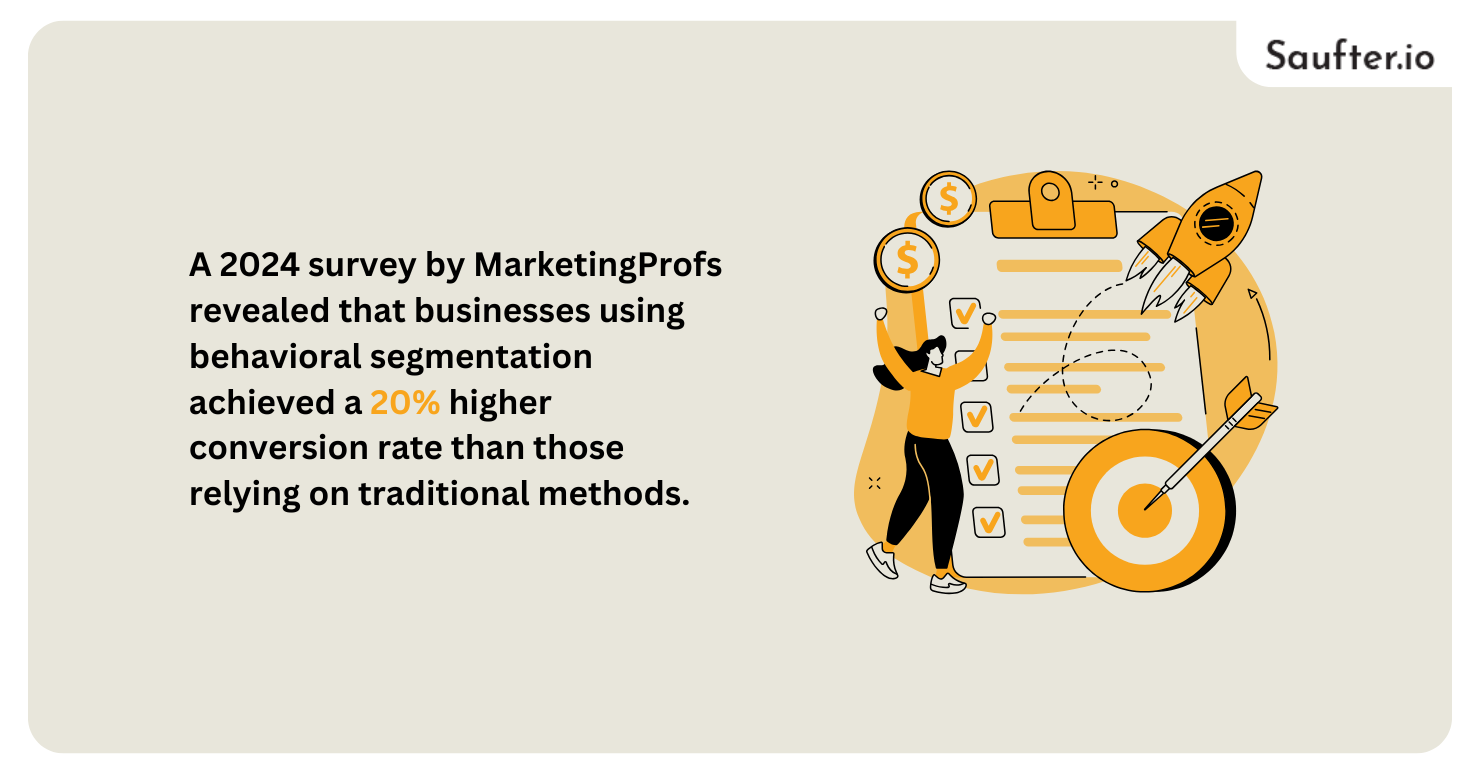
A 2025 survey by MarketingProfs revealed that businesses using behavioral segmentation achieved a 20% higher conversion rate than those relying on traditional methods.
In this article, we answer the question, what are behavioral characteristics in marketing?, and explore their features, benefits, and significance in driving successful campaigns.
Table of Contents
- What Are Behavioral Characteristics in Marketing?
- Key Features of Behavioral Segmentation
- Benefits of Behavioral Segmentation
- Applications of Behavioral Segmentation
- What Are Four Types of Behavioral Segmentation?
- Importance of Behavioral Segmentation
- Future Trends in Behavioral Marketing
- Saufter.io
- Conclusion
What Are Behavioral Characteristics in Marketing?
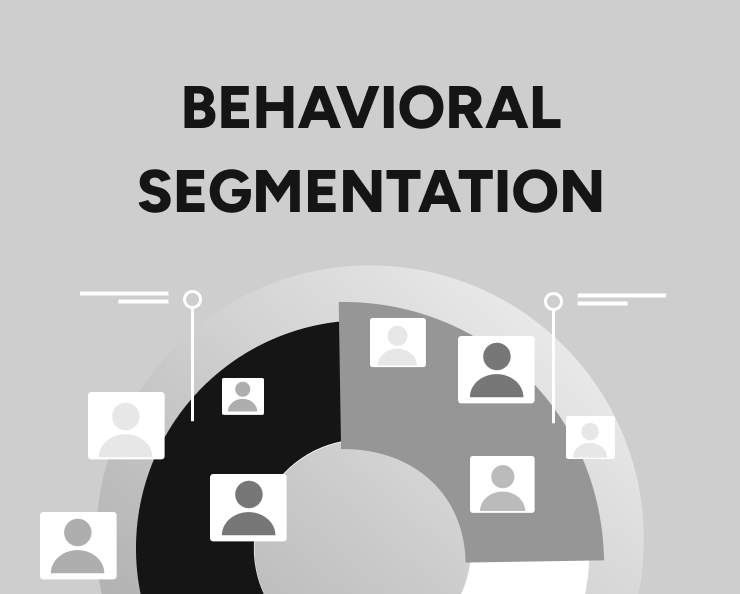
Behavioral characteristics in marketing refer to customer actions and preferences that brands use to segment audiences. This approach focuses on how people interact with products, services, and advertisements, offering a deeper understanding of their motivations and habits. Answering the question, what are behavioral characteristics in marketing, provides businesses with a blueprint for crafting strategies that resonate with specific customer segments.
Collecting and analyzing this data enables companies to align their marketing messages and products to customer needs more effectively.
Key Features of Behavioral Segmentation
1. Develops Targeted Marketing Strategies
Behavioral segmentation provides insights into customer attitudes and actions, allowing businesses to create targeted marketing strategies. By analyzing behavioral data, brands can customize their advertising and product offerings to address specific needs. For instance, companies that identify customer preferences can design campaigns that cater to those interests, staying competitive in their industry.
2. Enhances Customer Understanding
Understanding customer behaviors enables marketers to develop strategies that align with their interests and personality traits. By answering the question, what are behavioral characteristics in marketing, businesses can create more engaging campaigns that foster deeper connections with their audiences.
3. Relies on Actionable Data
Behavioral segmentation relies on real, measurable data. This approach ensures that marketing strategies reflect actual consumer actions, such as purchase patterns or engagement rates. Collecting accurate behavioral data allows companies to craft campaigns that directly address audience needs.
4. Utilizes Market Knowledge
Comprehensive market knowledge strengthens the effectiveness of behavioral segmentation. Marketers collect data from individuals actively participating in specific activities or markets, allowing them to refine their messaging and product offerings.
5. Adapts to Customer Preferences
Behavioral segmentation helps brands tailor campaigns to fit the unique preferences of each customer segment. This customization is achieved by developing psychographic profiles that identify key personality traits and interests, ensuring that campaigns resonate deeply with their target audience.
6. Analyzes Time-Usage Patterns
Analyzing how customers allocate their time to products or services provides valuable insights. For example, a retailer might study when customers use their mobile apps to optimize promotional messages and offers during peak engagement periods.
Benefits of Behavioral Segmentation
1. Improves Campaign Effectiveness
Targeted messaging ensures that campaigns reach the right audience, boosting engagement and response rates. Behavioral segmentation also allows businesses to optimize promotions based on customer profiles.
2. Expedites Decision-Making
Marketers can make quicker, data-driven decisions by focusing on behavioral patterns. This enables companies to identify the most responsive customer segments and prioritize their resources effectively.
3. Identifies Emerging Trends
Behavioral segmentation helps businesses detect new market trends and consumer preferences. Companies can identify which segments are growing and tailor strategies to capitalize on these opportunities.
4. Strengthens Brand Loyalty
Personalized marketing messages foster a stronger emotional connection with customers. When businesses address specific needs and preferences, customers are more likely to remain loyal.
5. Enhances ROI Measurement
Behavioral segmentation offers an easy way to measure marketing performance. Businesses can analyze the return on investment (ROI) of specific campaigns and identify areas for improvement.
Applications of Behavioral Segmentation
1. E-commerce Personalization
E-commerce businesses use behavioral data to recommend products, personalize offers, and enhance the shopping experience. For example, tracking customers’ browsing history allows platforms to suggest items they are more likely to purchase.
2. Optimizing Email Marketing Campaigns
Marketers can segment email lists based on customer behaviors, such as past purchases or content preferences. This improves open and conversion rates by delivering tailored messages to specific groups.
3. Enhancing Customer Retargeting
Behavioral segmentation aids in retargeting campaigns by identifying customers who engaged with a product but did not make a purchase. Businesses can use this data to create enticing offers or reminders to encourage conversions.
What Are Four Types of Behavioral Segmentation?

- Purchase Behavior This type of segmentation examines how and why customers make purchasing decisions. It includes factors like frequency, timing, and the decision-making process. For example, some customers may consistently buy during promotions, while others prefer premium products regardless of price.
- Usage-Based Segmentation Usage-based segmentation focuses on how customers use a product or service. Some might be light users, while others are heavy users or occasional users. Understanding these patterns allows businesses to tailor campaigns—for instance, offering discounts to light users to encourage more frequent usage.
- Occasion-Based Segmentation Occasion-based segmentation looks at specific events or times that drive customer behavior. For example, customers might purchase gifts during holidays or upgrade services during special occasions like birthdays or anniversaries. This segmentation helps companies craft timely and relevant marketing campaigns.
- Loyalty-Based Segmentation Loyalty segmentation categorizes customers based on their commitment to a brand. It identifies loyal customers, one-time buyers, and at-risk customers who may switch to competitors. Loyalty programs and personalized offers can be targeted to maintain or increase customer retention.
By leveraging these four types of behavioral segmentation, marketers can craft highly effective strategies that cater to diverse customer needs and preferences.
Importance of Behavioral Segmentation
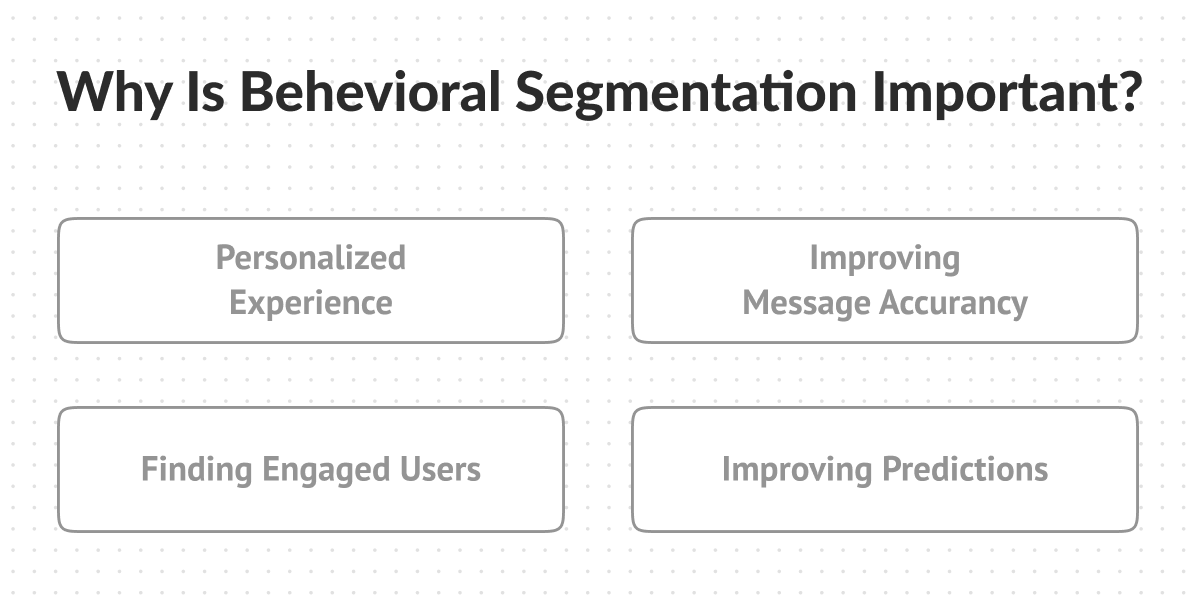
Importance of Behavioral Segmentation Behavioral segmentation plays a pivotal role in modern marketing, offering businesses the tools to understand and connect with their audiences on a deeper level. By analyzing behavioral characteristics in marketing, companies can identify patterns that reveal customer motivations, preferences, and decision-making processes. This insight enables brands to design highly personalized campaigns that speak directly to their target audiences, fostering stronger relationships and brand loyalty.
One of the primary advantages of behavioral segmentation is its ability to maximize the efficiency of marketing resources. Businesses can allocate their budgets and efforts to the most responsive segments by focusing on specific customer actions. This improves campaign effectiveness and reduces wastage, ensuring a higher return on investment.
Behavioral characteristics in marketing provide actionable data that helps marketers predict customer needs, enabling them to stay ahead of competitors.
Additionally, behavioral segmentation allows for real-time adaptability. By continuously monitoring customer behaviors, brands can adjust their strategies to align with changing preferences.
For example, an e-commerce platform can update product recommendations or promotional offers based on recent browsing activity. This dynamic approach ensures that marketing efforts remain relevant and impactful.
Understanding behavioral characteristics in marketing also empowers businesses to anticipate emerging trends. By recognizing shifts in consumer behavior early, brands can innovate and adapt their offerings to meet future demands. This proactive approach not only enhances customer satisfaction but also positions the brand as a market leader.
Ultimately, behavioral segmentation is indispensable for businesses aiming to build meaningful, long-lasting relationships with their customers while driving sustained growth.
Future Trends in Behavioral Marketing
As technology evolves, behavioral marketing is becoming more sophisticated. Key trends include:
- AI-Driven Insights: Artificial intelligence is enhancing the ability to quickly analyze vast amounts of behavioral data, providing deeper insights.
- Omnichannel Integration: Marketers focus on creating consistent experiences across platforms based on customer behavior.
- Predictive Analytics: Predicting future behaviors based on historical data allows businesses to anticipate customer needs and craft proactive strategies.
- Ethical Data Use: With increasing privacy concerns, companies are prioritizing transparency and ethical practices in behavioral data collection and usage.
Saufter.io– Best Email Marketing Automation Platform.

Saufter is a customer engagement & email marketing platform that automatically studies your user behavior on your portal/website and their journey stages to make campaign-related recommendations.
For example, it will recommend a how-to article for a feature they have not used. You receive fully drafted email & in-app campaigns every week and you simply have to approve the campaign.
Moreover, it crawls your competitors and suggests content campaigns based on their most recent blogs.
Key Features-
- Automate segmenting of users into cohorts based on behavior
- Automate email campaign suggestions to improve conversion & prevent churn
- Automate SEO campaign suggestions
- Automate conversion and churn prediction
Conclusion
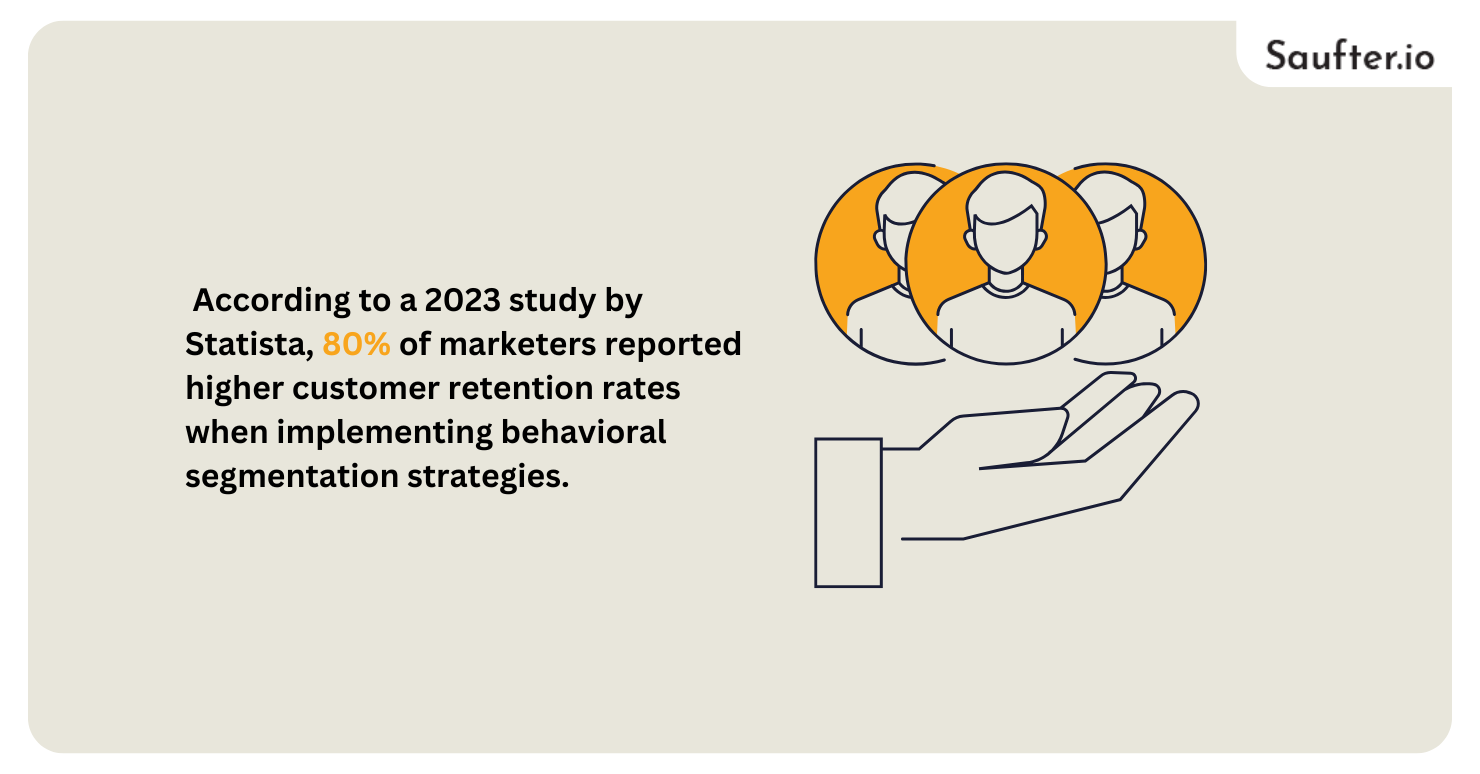
Understanding what are behavioral characteristics in marketing is essential for modern businesses seeking to connect meaningfully with their audiences. Behavioral segmentation offers a robust framework for creating personalized strategies that increase engagement, loyalty, and revenue.
According to a 2023 study by Statista, 80% of marketers reported higher customer retention rates when implementing behavioral segmentation strategies.
By leveraging this powerful tool and staying updated on emerging trends, companies can remain competitive in a rapidly evolving marketplace while delivering exceptional value to their customers.
